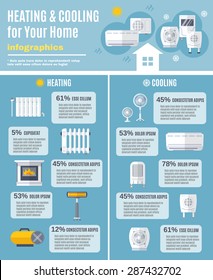The Ultimate Guide To Comprehending Warmth Pumps - How Do They Function?
The Ultimate Guide To Comprehending Warmth Pumps - How Do They Function?
Blog Article
Article Written By-Blanton Dickson
The most effective heatpump can save you substantial quantities of cash on energy expenses. They can also help in reducing greenhouse gas discharges, particularly if you utilize electricity instead of fossil fuels like propane and heating oil or electric-resistance heating systems.
Heat pumps work very much the like a/c do. This makes them a sensible choice to traditional electrical home heating unit.
How They Work
Heatpump cool homes in the summer and, with a little help from electrical power or gas, they offer some of your home's home heating in the winter season. They're a good alternative for people that want to lower their use of nonrenewable fuel sources yet aren't ready to replace their existing heater and air conditioning system.
They depend on the physical reality that even in air that appears also cold, there's still power present: cozy air is constantly relocating, and it intends to move right into cooler, lower-pressure settings like your home.
A lot of ENERGY STAR certified heatpump run at near their heating or cooling capacity throughout the majority of the year, decreasing on/off biking and conserving power. For the best performance, focus on systems with a high SEER and HSPF rating.
The Compressor
The heart of the heat pump is the compressor, which is also known as an air compressor. This mechanical flowing gadget uses potential power from power development to raise the stress of a gas by decreasing its quantity. It is different from a pump in that it only works with gases and can't deal with fluids, as pumps do.
Climatic air goes into the compressor with an inlet shutoff. It circumnavigates vane-mounted arms with self-adjusting size that divide the inside of the compressor, developing numerous tooth cavities of varying size. The rotor's spin forces these tooth cavities to move in and out of stage with each other, pressing the air.
The compressor pulls in the low-temperature, high-pressure refrigerant vapor from the evaporator and presses it right into the hot, pressurized state of a gas. This process is duplicated as needed to provide heating or air conditioning as needed. The compressor additionally contains a desuperheater coil that recycles the waste heat and includes superheat to the refrigerant, transforming it from its fluid to vapor state.
The Evaporator
The evaporator in heat pumps does the very same thing as it does in fridges and air conditioning system, transforming fluid cooling agent into a gaseous vapor that removes heat from the area. Heat pump systems would not work without this vital tool.
This part of the system lies inside your home or structure in an interior air trainer, which can be either a ducted or ductless unit. try this site has an evaporator coil and the compressor that presses the low-pressure vapor from the evaporator to high pressure gas.
dc installation services soak up ambient warm from the air, and afterwards utilize electrical power to move that heat to a home or organization in heating setting. That makes them a great deal much more energy efficient than electric heating systems or furnaces, and because they're utilizing clean electrical power from the grid (and not burning gas), they likewise produce far less exhausts. That's why heat pumps are such excellent environmental options. (In addition to a substantial reason they're ending up being so prominent.).
The Thermostat.
Heatpump are terrific alternatives for homes in cool climates, and you can use them in combination with traditional duct-based systems and even go ductless. They're a great different to fossil fuel heater or conventional electric heating systems, and they're a lot more lasting than oil, gas or nuclear cooling and heating devices.
Your thermostat is the most vital part of your heat pump system, and it works really in a different way than a traditional thermostat. All mechanical thermostats (all non-electronic ones) job by utilizing compounds that alter size with raising temperature, like curled bimetallic strips or the broadening wax in a vehicle radiator shutoff.
These strips consist of 2 different kinds of steel, and they're bolted together to form a bridge that completes an electrical circuit attached to your a/c system. As the strip gets warmer, one side of the bridge broadens faster than the other, which creates it to bend and signify that the heating unit is needed. When the heatpump is in home heating mode, the reversing valve turns around the circulation of refrigerant, so that the outside coil now functions as an evaporator and the indoor cyndrical tube comes to be a condenser.